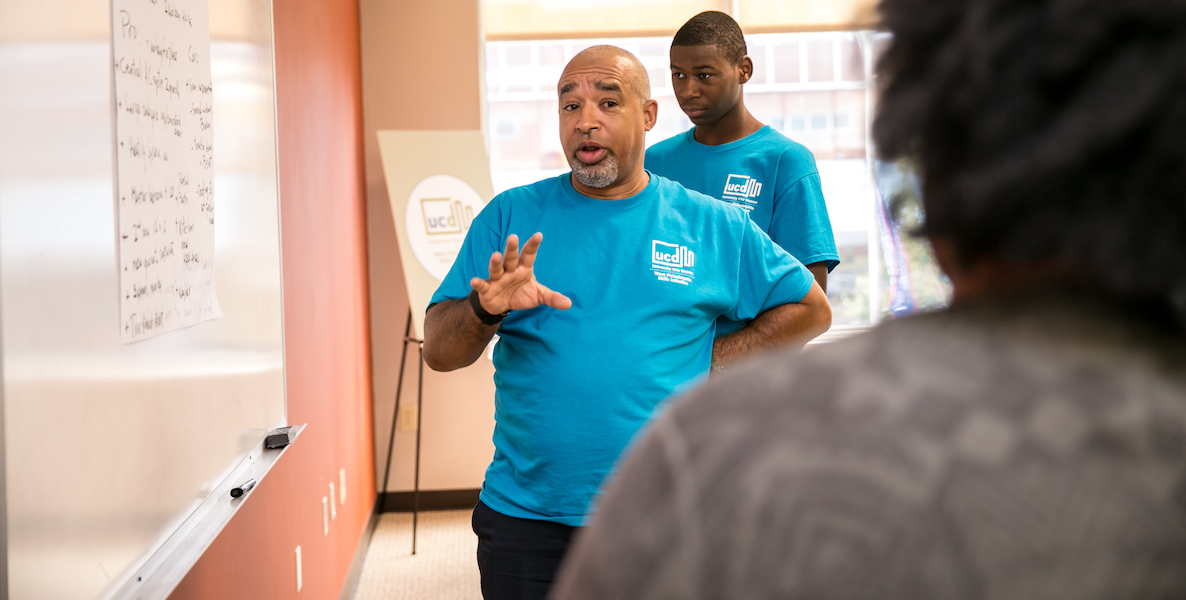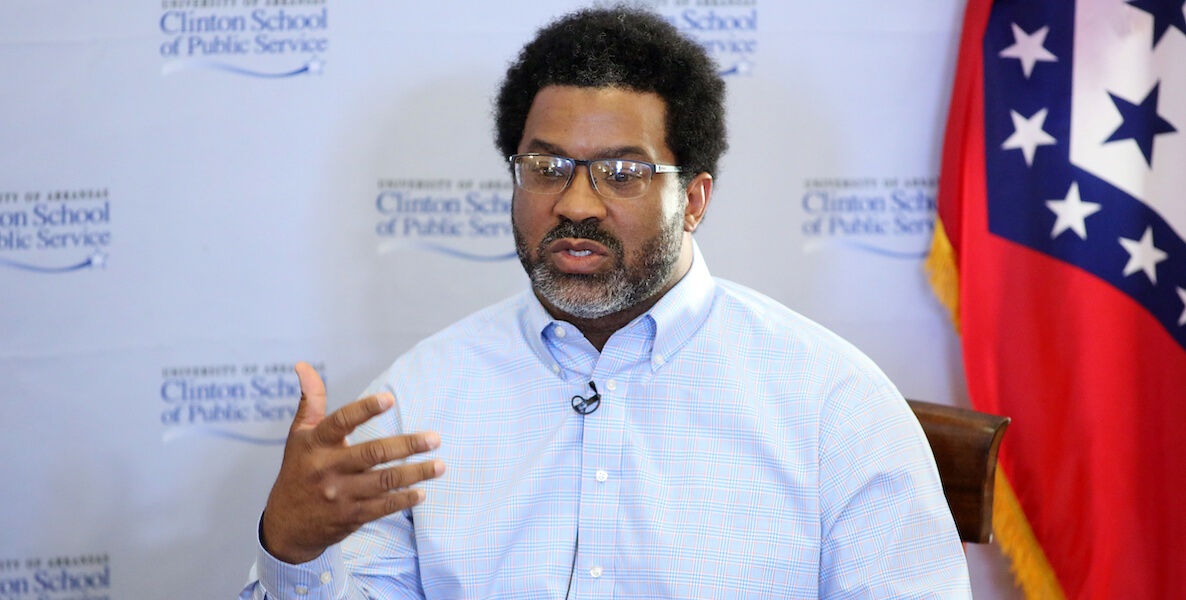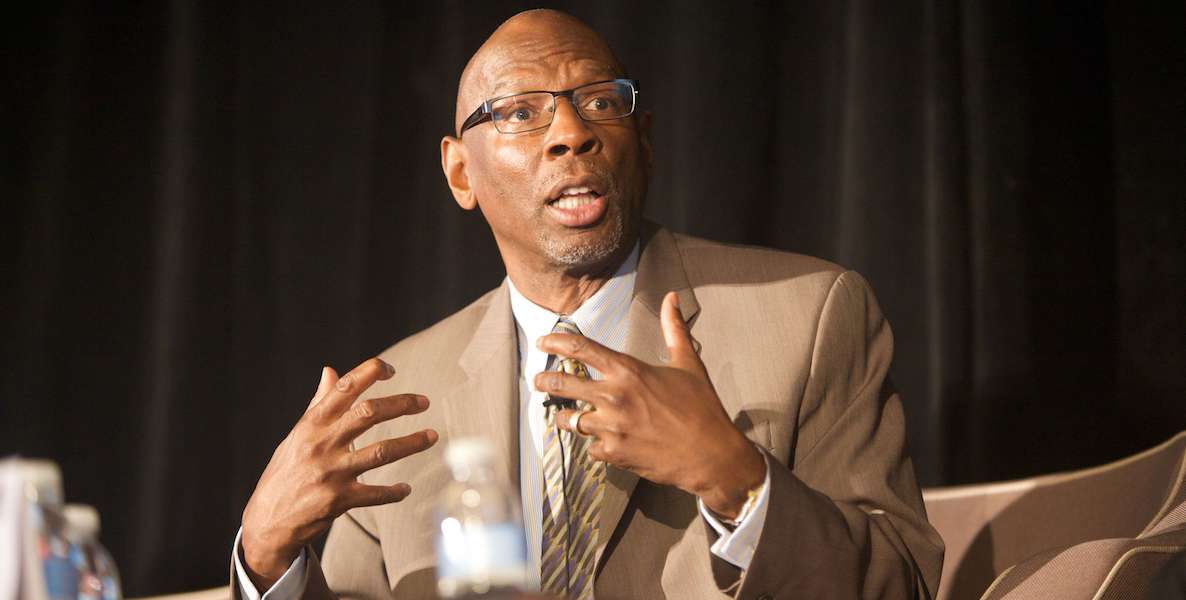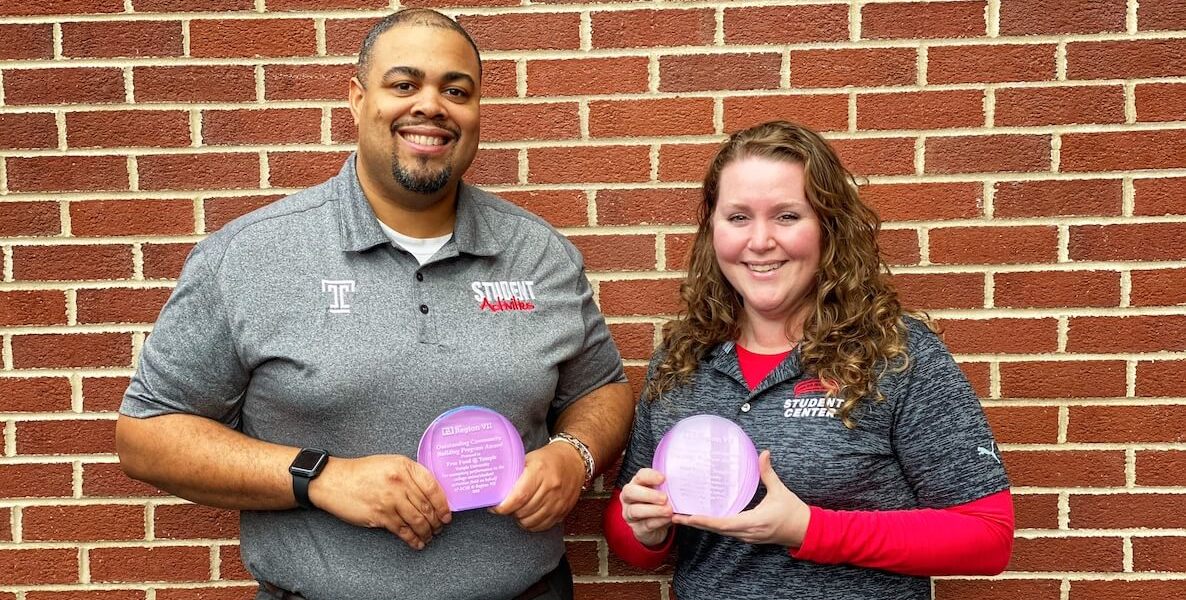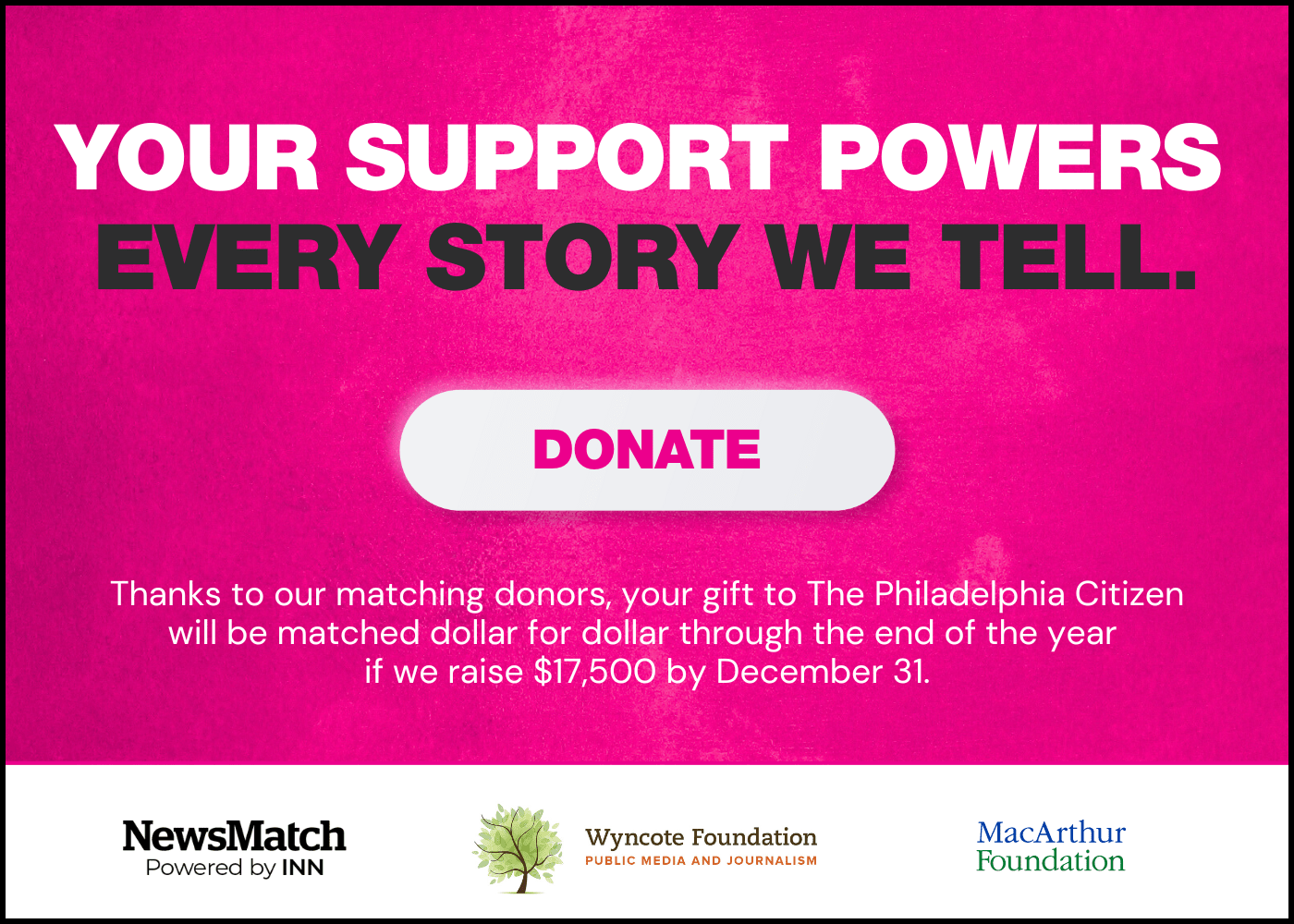![]() Let’s get the hagiography out of the way first: Geoffrey Canada is a freakin’ rock star. As president and CEO of The Harlem Children’s Zone (HCZ) from 1990 to 2014, he helmed one of the most ambitious social policy innovations of our time.
Let’s get the hagiography out of the way first: Geoffrey Canada is a freakin’ rock star. As president and CEO of The Harlem Children’s Zone (HCZ) from 1990 to 2014, he helmed one of the most ambitious social policy innovations of our time.
HCZ takes on generational poverty in a comprehensive way, providing parenting workshops, charter school education, and health-care interventions, all designed to remove barriers to success for low-income, at-risk students.
With off-the-chart graduation rates and college success stories, it became the gold standard in the education-reform movement, with Canada starring in the Academy Award-winning documentary Waiting for Superman in 2010.
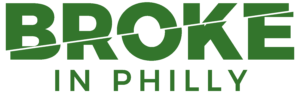 Canada cuts an inspiring figure, an interesting mix of practicality, charisma, and good old-fashioned moral outrage. He has a standup comic’s timing, a playful sense of the absurd, but is deadly serious about seeing in each student the urgency of our common moment.
Canada cuts an inspiring figure, an interesting mix of practicality, charisma, and good old-fashioned moral outrage. He has a standup comic’s timing, a playful sense of the absurd, but is deadly serious about seeing in each student the urgency of our common moment.
“We refuse to let kids fail,” he likes to say.
Read Paul Tough’s bestselling Whatever It Takes: Geoffrey Canada’s Quest to Change Harlem and America; or Canada’s own memoir, Fist Stick Knife Gun: A Personal History of Violence, a gripping account of the street-level roadblocks that stand in the way of achieving true racial equity; or watch his stirring 2013 TED Talk below, and you’ll walk away, shaking your head: If only we had more Geoff Canadas.
Canada has been quiet of late, ever since stepping down at HCZ after the movement he inspired took its lumps in the public consciousness, falling prey to the overly simplistic public-versus-charter debate, which we’ll get to.
That’s why it was so significant when he endorsed Michael Bloomberg for president last month. Geoffrey Canada’s imprimatur confers a progressive Good Housekeeping seal of approval.
It was telling that Canada’s endorsement came upon the release of Bloomberg’s Greenwood Initiative. It’s a plan aimed at taking on the systemic bias that has kept many African Americans from building wealth.
Bloomberg announced the program in the Greenwood neighborhood of Tulsa, Oklahoma, which was known as Black Wall Street in the early 20th century, the most prominent district of black-owned businesses in the nation. Until 1921, that is, when many were obliterated by a series of violent racial attacks known as the Black Wall Street Massacre.
The Greenwood Initiative calls for the creation of 1 million black homeowners ![]() and 100,000 black business-owners over the next decade. With a price tag of $70 billion, the plan will focus on homeownership as the way to build generational wealth, providing down payment assistance; enforcing fair lending laws; reducing foreclosures and evictions; increasing the supply for affordable housing; increasing access to capital for black-owned businesses, and supporting black-owned banks.
and 100,000 black business-owners over the next decade. With a price tag of $70 billion, the plan will focus on homeownership as the way to build generational wealth, providing down payment assistance; enforcing fair lending laws; reducing foreclosures and evictions; increasing the supply for affordable housing; increasing access to capital for black-owned businesses, and supporting black-owned banks.
In its ambition and gravitas, it’s a far cry from what usually passes for discussion of “African-American issues” in a presidential race. Those talking points—whether related to the safety net, or criminal justice reform—can tend to conjure the soft bigotry of low expectations, and often amount to little more than pandering at election time. Here, finally, is a plan aimed at not only the wealth gap—but also our knowledge gap.
Canada comes out of the nonprofit world; he’s not someone who endorses politicians. But he has now, owing to this plan’s investment in equity for poor black and brown folk, and for its forthrightness in dealing straight with our racial story.
That’s where our conversation began, with the notion of taking on the “opportunity gap,” and a consideration of what’s known, and what’s not known, when it comes to our shared racial history—and his long back-and-forth with Bloomberg about stop-and-frisk.
I’m a grandfather, and you use home ownership to build up equity so your kids don’t have to start life in debt. Well, the opportunity to build equity has been systematically denied to African Americans.
Larry Platt: When you announced your endorsement of Mike Bloomberg, you used a phrase that jumped out at me, because when we talk about African-American issues in the context of national politics most candidates usually start with either safety-net policies or criminal justice reform. You talked about closing the “opportunity gap.” Can you elaborate on what that is, and why it’s so important?
Geoffrey Canada: I believe the key difference between what Mike proposes and everyone else that’s running is that Mike thinks the biggest challenge African Americans face is the ability to close the opportunity gap, which is why Mike launched his equity agenda, the Greenwood Initiative, which he did after he found out about Black Wall Street.
You mention the safety net. We don’t just need welfare—we need equal opportunity under the law. When we have that, a black middle class flourishes. When you deny equal opportunity in housing and education, you deny the fundamental building blocks into the middle class.
When I grew up in the late ’50s and early ’60s, people had never seen a black quarterback. The thought at the time was that was connected to not having the skills to play the position, but all it was was that blacks had been denied the opportunity to compete. I’m convinced that, if given real opportunity, African Americans will be just as successful in eds and meds, and everything else.
LP: Part of that, then, demands widening the aperture of our lens as to what inclusive economic growth can look like, right? Particularly for those of us in the media, we have to make sure we’re not sending signals that certain jobs—like quarterback once upon a time—are not just for certain people, right?
GC: You know, it’s really interesting. I don’t fault whites or blacks for not understanding the contributions of African Americans in industries across the board—those stories have been systematically suppressed.
Remember that movie Hidden Figures? About those women at NASA they called computers, they were so good at math? They helped the first men orbit the earth. Well, at the time, as a young man watching the space race, I had no idea African Americans were so critical in that effort. Knowing that would have changed my whole view. Oh, we got George Washington Carver in our history class, but we didn’t know African-American women were engineers at NASA! And when you don’t see that, your aspirations have been limited for you.
LP: Charles Barkley penned something called ‘African American All-Stars’ for us for Black History Month, profiles of African-American achievers in the law, medicine and private sector throughout history, because he says that when he speaks to an inner-city high school and asks ‘Who here wants to be a basketball player or a rapper?’ just about every hand shoots up.
GC: I hold the education system responsible for that. We’ve got a million African-American kids dribbling a basketball or writing rap songs for that one tiny opportunity to become a professional athlete or performer. Education is the key, and we’ve got to understand how we got here. Which is why Mike is so focused on the inability of African Americans to transfer wealth from one generation to the next.
There’s been the inability to get loans, the unusually high interest rates, the losing of property by force after slavery, the systemic discrimination around the GI Bill of Rights—which led to the widespread hiring of all groups after World War II, except for one.
We found that, in many cases, working actually made you poorer, so we asked: How can we make work pay, and what’s stopping folk from being employed? Learning new skills.
Blacks were systematically excluded in places like Levittown, the symbol of the new middle class. I’m a grandfather, and you use home ownership to build up equity so your kids don’t have to start life in debt. Well, the opportunity to build equity has been systematically denied to African Americans.
LP: The statistics are stunning. White net worth is 10 times that of African-American net worth. Here in Philly, a city that’s 40 percent African American, only 2.5 percent of non-sole proprietor businesses are owned by African Americans. That’s why I was so psyched to see you talk about the opportunity gap and economic growth. And we haven’t even mentioned the degree to which another otherwise progressive idea—like highways—actually carved out and created ghettos.
GC: These things didn’t just happen. 2020 is the time to deal with some of this stuff. Most people grow up not understanding these large macro influences. I think good people of all colors want a fair playing field. But if you don’t know about these historical systemic barriers, you come up with other reasons to describe these outcomes: They don’t work as hard. They’re taking handouts. They’re taking from me.
LP: I’ve got to ask you about Stop and Frisk, which—in the interest of full disclosure—I first supported when Michael Nutter, now Bloomberg’s campaign chair, was mayor here. He called it “Stop, question and frisk,” though I’m not sure if that addition made a difference.![]()
But then I was convinced by Charlie Rangel and the rest of the Congressional Black Caucus, when they said that being able to walk the streets in your neighborhood without getting shot was the new civil right. How’d we get it wrong?
GC: In New York in the ’80s, crack was running rampant, homicide was off the charts. That’s why I wrote my first book. That’s when this new theory of policing, Broken Windows, got introduced, and it made sense.
At first, I supported it. My kids were dying. We thought that what was being done was using criminal justice precision to identify who was most likely to be involved with gangs. We had no idea they were stopping every black kid they could find and throwing him up against the wall.
So I came to be against the practice, not the theory. Mike and I would debate it. ‘I know you think you’re bringing down crime and saving black lives,’ I told him, ‘but you can’t just go around locking up young black kids without consequences. This is discriminatory.’
Mike and I would debate stop and frisk. ‘I know you think you’re bringing down crime and saving black lives,’ I told him, ‘but you can’t just go around locking up young black kids without consequences. This is discriminatory.’
I told everybody that, by the way: Bill Clinton, Janet Reno, Joe Biden, who I testified before when he wrote the Crime Bill. They weren’t doing what they did because they thought it would hurt our community. They just didn’t listen to the folks who were affected by their policies.
I used to fight with [NY police commissioners] Bratton and Kelly about this. They honestly believed in their position. They’d say, ‘Are fewer of your kids dying today than they were before? Are you willing to risk even five extra deaths?’ My answer to that was no.
We’ve since learned from science that this bad policy wasn’t necessarily connected to a reduction in crime, but we didn’t know that then. We didn’t have the research then. Now we know that you can reduce crime without these tactics.
So I’m not giving Mike a pass. I’m saying, he was wrong, and he’s apologized, and it wasn’t one of those cynical apologies. It was full and complete. And in his philanthropy and the Greenwood Initiative, Mike’s all about the remedy—getting black men and Latinos good jobs.
LP: Well, the other remedy Mayor Bloomberg seems to have focused on is poverty reduction. We’ve written about this and even had someone from the Mayor’s Office for Economic Opportunity present at our Ideas We Should Steal Festival. Between 2006 and 2013, New York was the only big city to reduce its poverty rate, by 4 percent.
That came after you and former Time-Warner CEO Dick Parsons were tapped by Bloomberg to chair the city’s Commission for Equal Opportunity. What did you guys do to make the inroads that you made?
GC: When Mike originally called about chairing the poverty commission, Dick Parsons and I sat down and started looking at this. We looked at what other cities were doing, we looked at the UK, where there were significant gains in poverty reduction, and we looked at our systems.
![]() We found that, in many cases, working actually made you poorer, so we asked: How can we make work pay, and what’s stopping folk from being employed? Learning new skills. If you were coming out of jail, or hadn’t graduated high school, there was no systemic way to train or retrain folks. We came up with a comprehensive strategy to push on the levers of government to make it so we reward work.
We found that, in many cases, working actually made you poorer, so we asked: How can we make work pay, and what’s stopping folk from being employed? Learning new skills. If you were coming out of jail, or hadn’t graduated high school, there was no systemic way to train or retrain folks. We came up with a comprehensive strategy to push on the levers of government to make it so we reward work.
These were modest investments. For example, people don’t realize how fragile the economic standing is for kids in the city college system. A lot of kids were jumping turnstiles just to get to class at CCNY. Most poor kids don’t take just one train—they need to take a train and a bus. Well, our free-bus-pass system stopped after high school. Why were we making it harder on people to succeed?
A newer issue is hunger at the college level. If you want to level the playing field, you can’t have one group of students with their stomachs rumbling and another eating three squares a day. Mike cared about these direct interventions, and didn’t get much credit for them.
LP: Finally, Geoffrey, did education reform lose the PR war?
GC: Yes, we did. We totally lost the PR war, due a little bit to our own hubris. We didn’t think we needed to go out and explain ourselves fully, and the debate became public-versus-charter.
When Mike and I talked about this, we agreed we can’t go down that path again. We need to take another bite of that apple with a comprehensive public school plan that gives parents what they want and that crosses that divide between one camp and the other.
Most parents want a high quality public school with accountability, with discipline that doesn’t go off the deep end, with security—to send your child off to school in fear is a horrible thing. They want public options that are just as good as the private ones — and so would I, with my own child.
LP: I can’t thank you enough, not only for taking the time today to talk about these issues, but for being on the front lines for decades, working on some of our most intractable challenges.
GC: Thank you.
This interview was edited and condensed.
The Citizen is one of 20 news organizations producing Broke in Philly, a collaborative reporting project on solutions to poverty and the city’s push towards economic justice. Follow the project on Twitter @BrokeInPhilly.
Photo courtesy U.S. Department of Education / Flickr


